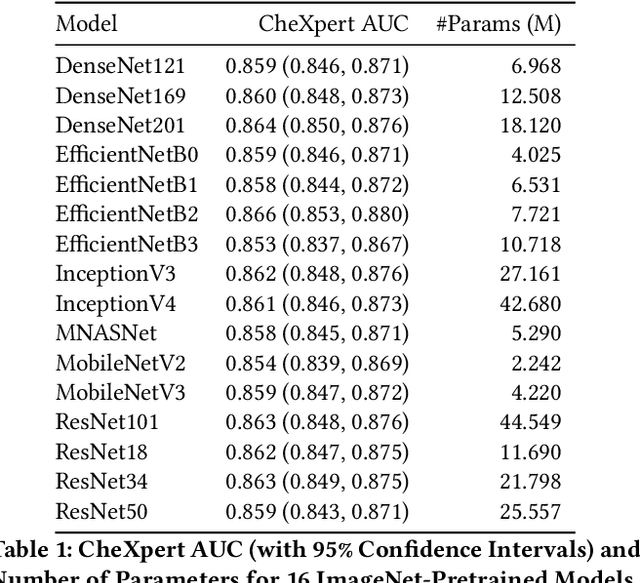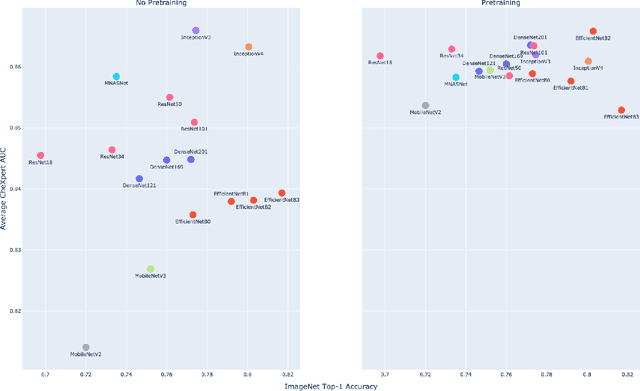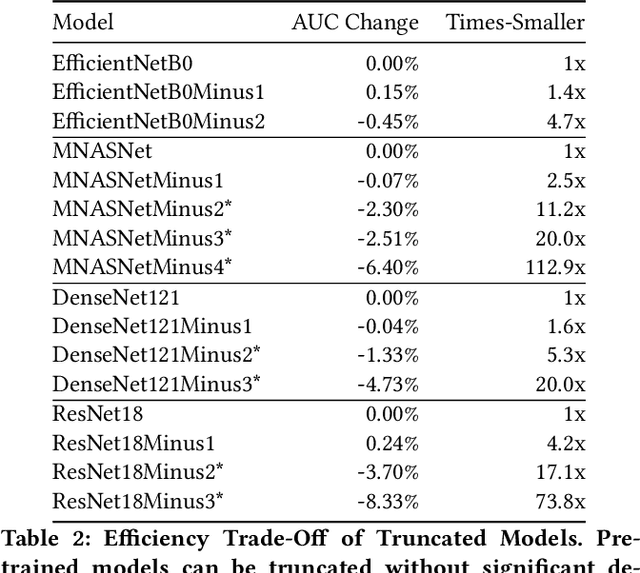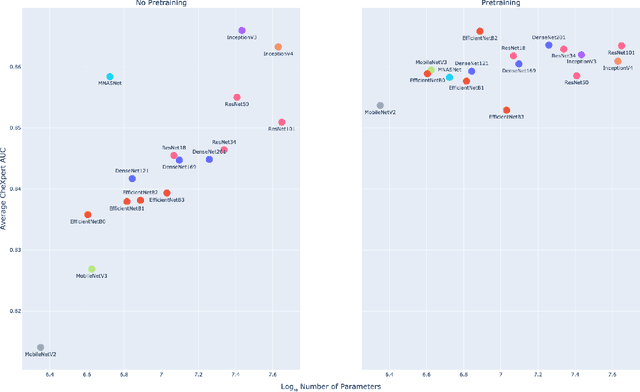Alexander Ke
Video Pretraining Advances 3D Deep Learning on Chest CT Tasks
Apr 02, 2023Abstract:Pretraining on large natural image classification datasets such as ImageNet has aided model development on data-scarce 2D medical tasks. 3D medical tasks often have much less data than 2D medical tasks, prompting practitioners to rely on pretrained 2D models to featurize slices. However, these 2D models have been surpassed by 3D models on 3D computer vision benchmarks since they do not natively leverage cross-sectional or temporal information. In this study, we explore whether natural video pretraining for 3D models can enable higher performance on smaller datasets for 3D medical tasks. We demonstrate video pretraining improves the average performance of seven 3D models on two chest CT datasets, regardless of finetuning dataset size, and that video pretraining allows 3D models to outperform 2D baselines. Lastly, we observe that pretraining on the large-scale out-of-domain Kinetics dataset improves performance more than pretraining on a typically-sized in-domain CT dataset. Our results show consistent benefits of video pretraining across a wide array of architectures, tasks, and training dataset sizes, supporting a shift from small-scale in-domain pretraining to large-scale out-of-domain pretraining for 3D medical tasks. Our code is available at: https://github.com/rajpurkarlab/chest-ct-pretraining
CheXtransfer: Performance and Parameter Efficiency of ImageNet Models for Chest X-Ray Interpretation
Jan 18, 2021



Abstract:Deep learning methods for chest X-ray interpretation typically rely on pretrained models developed for ImageNet. This paradigm assumes that better ImageNet architectures perform better on chest X-ray tasks and that ImageNet-pretrained weights provide a performance boost over random initialization. In this work, we compare the transfer performance and parameter efficiency of 16 popular convolutional architectures on a large chest X-ray dataset (CheXpert) to investigate these assumptions. First, we find no relationship between ImageNet performance and CheXpert performance for both models without pretraining and models with pretraining. Second, we find that, for models without pretraining, the choice of model family influences performance more than size within a family for medical imaging tasks. Third, we observe that ImageNet pretraining yields a statistically significant boost in performance across architectures, with a higher boost for smaller architectures. Fourth, we examine whether ImageNet architectures are unnecessarily large for CheXpert by truncating final blocks from pretrained models, and find that we can make models 3.25x more parameter-efficient on average without a statistically significant drop in performance. Our work contributes new experimental evidence about the relation of ImageNet to chest x-ray interpretation performance.
 Add to Chrome
Add to Chrome Add to Firefox
Add to Firefox Add to Edge
Add to Edge